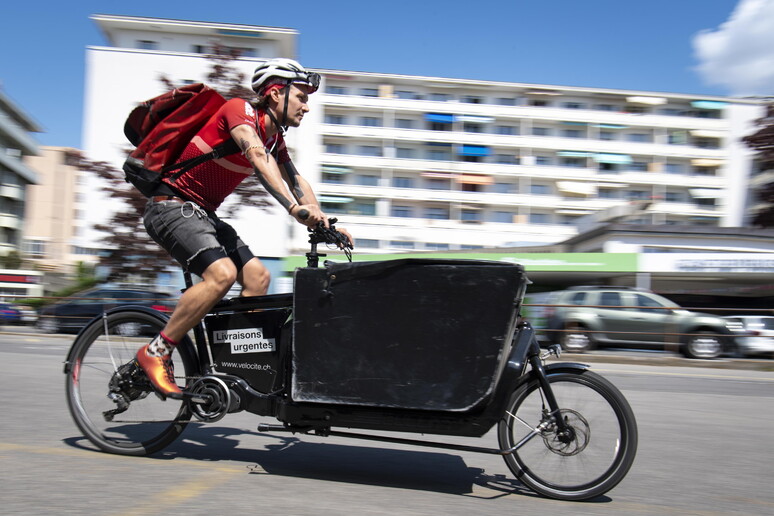New York revives its ancient waterways and pedals its way toward a more sustainable future. On Tuesday, the administration announced two key initiatives to combat diesel truck traffic and improve air quality: new cargo bike microhubs in Manhattan and a barge dock in the Bronx. The goal is to make the city’s delivery system more efficient and eco-friendly, reducing heavy truck trips by at least a thousand per month.
The Department of Transportation introduced three small urban infrastructures located on the sidewalk on the Upper West Side, dedicated to the parking and logistics of cargo bikes managed by selected companies. According to officials, these represent a first step in a broader strategy to make the rapidly growing urban delivery sector more efficient, organized, and “clean.”
Meanwhile, in the heart of the Bronx, the New York City Economic Development Corporation EDC, a non-profit organization working closely with the city to promote economic growth and job creation, is ready to open a new temporary barge docking facility near the large Hunts Point fish market.
The initiative, developed in collaboration with logistics company Con Agg Global, involves the river transport of food and construction materials, connecting the Bronx terminal to strategic ports such as Newark, New Jersey.
Andrew Kimball, president of EDC, called the project “a return to the future” and reminded us that for centuries, the Big Apple relied on waterways for the daily movement of goods, from building supplies to food. He emphasized that the initiative represents a triple win: for the economy, for the environment, and for food security.
The Bronx initiative is part of the city’s larger “Blue Highways“ plan, which aims to transform urban ports such as the Downtown Manhattan heliport, into new hubs for deliveries. The idea is to convert disused structures into hubs to allow more “last-mile”, shipments, where cargo bikes can pick up packages directly from ships, thereby easing road traffic and reducing pollution.
Dariella Rodriguez from the Point Community Development Corporation, a non-profit dedicated to youth development, highlighted how micromobility and barges can have a direct impact on community health. The South Bronx, in fact, has the highest rates of childhood asthma among all boroughs, largely related to air quality. Reducing heavy traffic will not only make the atmosphere healthier but also make the streets safer and more livable.
With a metropolis expecting a 70% increase in the volume of goods transported in the next 20 years, these new routes could prove crucial. The Big Apple, accessing historic memory and applying it to innovation, is trying to imagine a different, more sustainable: looking back to move ahead.












